Saint Marianne Cope, formerly known as Barbara Koob, was born on Jan. 23, 1838 in Hesse, Germany. Two years after her birth, St. Marianne and her family emigrated to the United States settling in Utica, New York. There, the Koob family became members of St. Joseph Parish, where the children attended the parish school.
Growing up, St. Marianne would pitch in to support her family, mainly by working in factories. It was until August 1862, where she began to pursue her religious calling. St. Marianne joined the Sisters of the Third Order of Saint Francis in Syracuse, New York, which is also when she began to go by Marianne instead of Barbara. On November 19, she was invested at the Church of the Assumption.
She was a natural-born leader and caretaker. During her time in New York, she helped found the first two Catholic hospitals in the city’s central, with policies that dictated that medical care should be given to all regardless of race or creed. Her background in medicine would prove to be critical to when she was asked to come to the Hawaiian islands.
In 1883, a priest in Hawaii sent letters to more than 50 religious communities in the United States asking for help on behalf of King Kalakaua and Queen Kapiolani. Out of the total requests sent, only St. Marianne’s Order of Sisters agreed to come to care for people with Hansen’s Disease, which was referred to at the time as leprosy.
The Sisters arrived in Hawaii on Nov. 8, 1883, dedicating themselves to the care of the hundreds of lepers on Oahu. The Kakaako Branch Hospital, which was built to accommodate 100 people, housed more than 200 lepers.The conditions at the hospital were deplorable. Each Sister-nurse learned to wash the fetid wounds, apply soothing ointments, and bring a sense of order to the lawlessness that previously prevailed in the dispiriting facility.
To further help those who were suffering in other areas, Saint Marianne founded the Malulani Hospital a year later. In 1885, she also founded the Kapiolani Marianne Home on Oahu for healthy female children of leprosy patients. This was done to keep healthy children, who have no place to live, of leprous patients away from contracting the disease.
In the summer of 1886, the Sisters took care of Saint Damien when he visited Honolulu during his bout with leprosy. He asked the Sisters to take over his work in Molokai for him when he dies. Mother Marianne led the first contingent of Sister-nurses to Kalaupapa, Molokai, where more than a thousand people with leprosy had been exiled.
Upon arrival, in November 1888, she opened the C.R. Bishop Home for homeless women and girls with Hansen’s Disease. To improve the bleak conditions, Saint Marianne grew fruits, vegetables, and landscaped the area with trees creating a more vibrant area for its residents. While at Kalaupapa, St. Marianne required her sisters to use stringent hand washing and other sanitary procedures when conducting all activities.
Upon the death of Saint Damien on April 15, 1889, St. Marianne agreed to head the Boys Home at Kalawao. The Board of Health had quickly chosen her as St. Damien’s successor and she was thus enabled to keep her promise to him to look after his boys. The Boys Home at Kalawao was completely renovated between 1889-1895 during her administration.
Although there was no cure at the time, the sisters offered the lepers some semblance of dignity and as pleasant of a life as possible. St. Marianne died in Kalaupapa on Aug. 9, 1918. Because of her work, she was the recipient of many honors, two of which are the Royal Medal of Kapiolani and a poem written by Scottish writer Robert Louis Stevenson.
St. Marianne was canonized on Oct. 21, 2012. The Sisters of St. Francis continues its work today in Molokai with victims of Hansen’s disease. No sister has ever contracted the illness. St. Marianne’s Feast Day is on January 23.
The mortal remains of St. Marianne Cope are enriched in a reliquary at the Cathedral Basilica of Our Lady of Peace, Honolulu.
